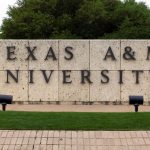Iowa made headlines earlier this year when it became the first U.S. state in 2023 to pass universal school choice legislation enabling education funding to follow all students. Utah was next, followed by four additional states, bringing to eight the total number of states with universal education choice policies enacted over the past two years. EdChoice has rightfully proclaimed that 2023 is the “Year of Universal Choice.”
This is a positive trend that will dramatically increase family accessibility to education options beyond an assigned district school. Yet, families in some states with universal choice have many more options than those in other states.
In Iowa, for example, the state’s new universal Education Savings Account (ESA) program enables all K-12 students access to about $7,600 a year toward approved education providers. More than 29,000 Iowans have applied to access these funds. Unlike similar universal ESA programs in states such as Arizona and Utah, many Iowa education options are excluded, limiting supply and constraining choice.
“I’ve had a lot of families say, can we use this? Does this qualify?” said Troy Salazar, founder of Liberty Self-Directed Learning Center, a microschool in West Des Moines, Iowa. “Unfortunately, I have to tell them no, it doesn’t,” he said, referring to Iowa’s new ESA. A former teacher in the Iowa public schools for 22 years, Salazar opened Liberty in the fall of 2022 to provide an alternative to conventional schooling.
“I remember saying to colleagues and friends, why are there so many unhappy kids? It just blew my mind,” Salazar told me in a recent interview. “There were several times in the last few years where I said I can’t do this anymore. Then, in my last year, I called my wife and said the idea of our grandkids being in this classroom scares me. I wasn’t exaggerating or being dramatic, and it was nothing that the kids were doing. It was the response that the kids were having to this system. They were so checked out.”
One day while driving in his car, Salazar was listening to a podcast that mentioned the Sudbury Valley School, a self-directed, democratic school that was founded in Framingham, Massachusetts in 1968. It continues to flourish today and has inspired the growth of dozens of Sudbury-model schools around the world.
Salazar was hooked. “I got goosebumps,” he said, wondering how he had not heard of this model in all of his years working in education.
Salazar reached out to Nick Lachen, a former public high school physics teacher who was hoping to launch a Sudbury-model school in Des Moines. I wrote at Forbes.com earlier this year how Iowa’s private school regulations—which long preceded any school choice policies—are among the most restrictive in the U.S. These regulations prevented Lachen from opening his school in Iowa. Instead, he’s leaving the state so that his children can attend another Sudbury-model school.
Salazar realized that starting a private school in Iowa, especially a learner-driven one, would be difficult. Instead, he launched Liberty as part of the Liberated Learners global network of drop-off, self-directed learning centers for homeschoolers. This network was cofounded by Kenneth Danford in 2013 to encourage the growth of self-directed education and provide more low-cost schooling alternatives for families. A former public school teacher, Danford created North Star: Self-Directed Learning for Teens in 1996, which became the educational model for Liberated Learners.
In states such as Arizona and Utah, families are able to use their ESA funds toward programs like Liberty Self-Directed Learning Center. Its low fees, at around $10,000 a year for a full-time option and less for part-time options, make it highly accessible with ESA funding. But in other ESA states, including Iowa, these programs are excluded.
“It’s baby steps, right?” said Salazar who is a supporter of Iowa’s education choice policies. “I think this was a step in the right direction for our families and our communities to look for education that works for their kids and their families as they see fit. Maybe in time we’ll qualify. Until that day comes, we’re just going to do our best to fundraise and make it affordable.”
Salazar explained that he has not turned away any families for an inability to pay, and uses scholarships to defray tuition costs.
Universal education choice programs open up access to many more educational possibilities for families, but those possibilities remain constrained in some states by onerous regulations and exclusions of innovative learning models. True education choice means allowing parents to make the choices that are best for their children while allowing entrepreneurial educators to create those choices.
Read the full article here










